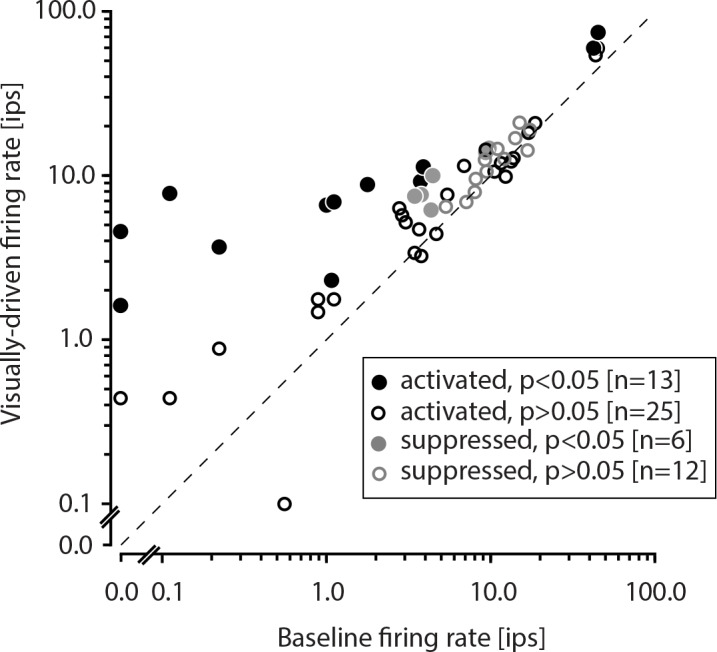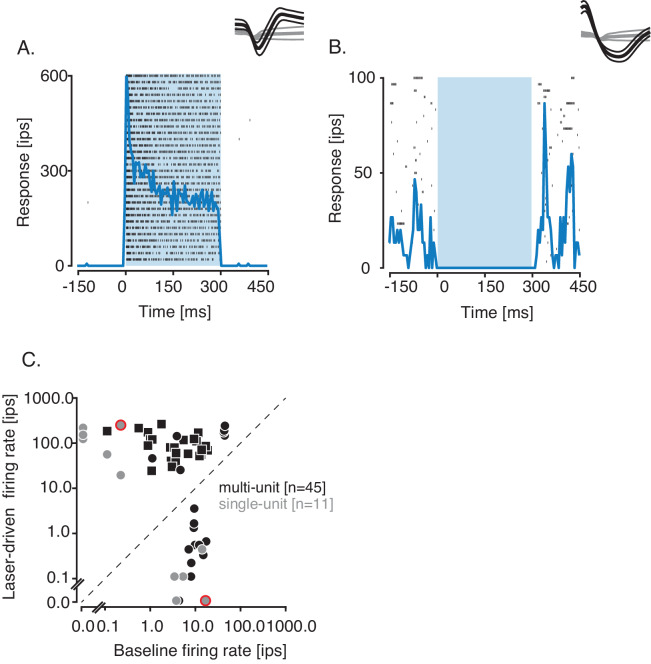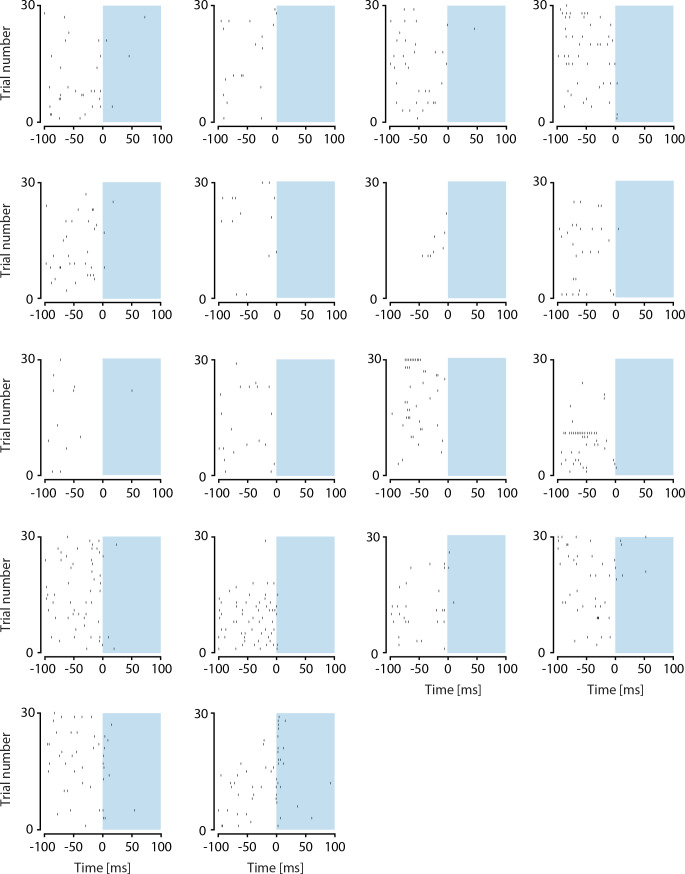Figure 2. Optogenetic activation and suppression of single- and multi-units.
(A,B) Responses (in impulses per second, ips) of two example single units, aligned to the onset of optical stimulation, which lasted 300 ms (blue rectangle). Rasters (tick marks) and peristimulus time histograms (blue traces) are shown for an activated single unit (A) and a suppressed single unit (B). Insets: Mean spike waveform (thick black curve) and noise waveform (thick gray curve) ± 1 standard deviation (thin curves). (C) Scatter plot of firing rate on laser trials against baseline firing rate of units from monkey 2 (squares) and monkey 3 (circles). Data from example activated and suppressed units are circled in red. Firing rates were computed during optical stimulation or the equivalent epoch on control trials.
Figure 2—figure supplement 1. Analysis of visually driven responses at activated and suppressed sites.

Figure 2—figure supplement 2. Analysis of latency at activated and suppressed sites.



